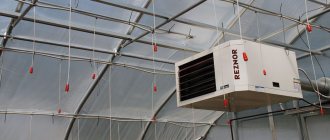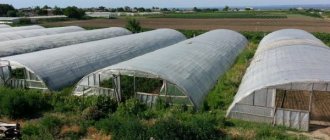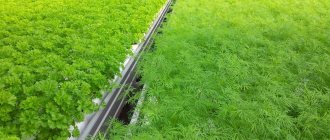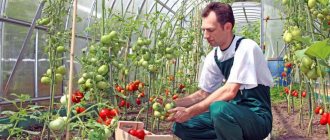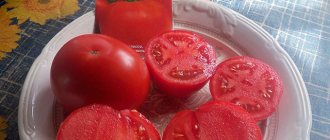The agricultural business is now increasingly gaining momentum. The authorities strongly support initiatives in this area; moreover, often this area of earning money does not require such terrible investments as, for example, opening your own clothing factory, bakery or cosmetics company. There is also always a great demand for agricultural products, because good healthy food is something without which a person cannot exist. Growing greens in a greenhouse as a business is an excellent option for investing savings in order to get a good income. How profitable is it, how to start it and how not to go bankrupt in the pursuit of wealth?
Growing greens in a greenhouse as a business
Project Description
The goal of the project is to obtain a stable income from growing and selling greens. This line of business is actively developing. The demand for fresh greens increases every year, which is associated with an increase in the number of our fellow citizens choosing a healthy diet, as well as with a decrease in import volumes.
If you organize sales of grown products, you will not only quickly recoup your initial investment, but also receive a decent, stable income.
Goals and objectives
The goal is business development, increasing production and sales volumes.
Achieving this goal is directly related to solving a number of problems:
- selection of land for establishing production;
- studying the niche and choosing the crops most in demand among buyers;
- creating optimal conditions for growing;
- search and development of optimal ways to sell grown products.
Greens are a perishable commodity. Your main task is to implement it immediately after harvesting.
Choosing a growing method
Greens are grown for sale in three ways:
- At home (on the balcony, window sills, loggias). Disadvantages: small production volume, average quality of greens. Advantages: you will be able to sell your goods in the winter, during the period of maximum demand, you will test the market and your crop-growing abilities.
- At the dacha, personal plot. Disadvantages: seasonality, dependence on climate. Advantages: high quality greens, growing a wide range of crops, “testing” the market.
- In a greenhouse or greenhouse. Disadvantages: you need start-up capital to set up greenhouses, a little knowledge of agronomy, land, personnel, established sales channels. Advantages: this is a full-fledged entrepreneurial activity that promises good profits if the business is properly organized.
If you are aiming to earn a good income, choose the greenhouse growing method.
Photo gallery
Growing lettuce in a greenhouse
How to grow greens on a windowsill
Parsley in a greenhouse
Green onions in the room
Market and competitor analysis
Analyze the market situation and competitors’ offers yourself or involve professionals from consulting companies (if you have the funds for this).
Market analysis implies:
- determining the number of competitors in the regional market;
- studying their range and price offers;
- determination of demand in different periods of the year;
- identifying risks and pitfalls.
Competitor analysis:
- determining the number of competitors and the “style” of their work (seasonal, permanent);
- analysis of pricing principles;
- study of the assortment.
According to the consulting company, as of December 2022, the harvest of greenhouse vegetables and salad crops was 3 times higher than the yield of the agro-industrial complex. In 2022, greenhouse areas in Russia increased by 200 hectares. The growth of the industry is associated with restrictions on imports and increased investment.
What to do before starting a microgreens farm
The first thing to do is try growing microgreens at home. You won't need to spend a lot of money to do this. You order seeds, substrate, in your city you find trays, small trays for sowing seeds. Did you try it, everything grew, did you like the taste? Having received a lot of positive emotions and a charge of motivation, you begin further planning.
Decide how much money you are willing to spend to start your business. This will determine what equipment you can purchase to start. What seeds will you order, what room will you rent for growing. It is also worth deciding what kind of greens you will grow; this will determine what kind of shelving you will need. You can assemble the racks yourself (saving a lot on equipment), or buy ready-made solutions and start working right away.
We recommend reading: Which rack for microgreens should you choose?
Then you need to monitor the microgreens market in your city. See the number of farms that are already growing, what greens they grow, what packaging they use. Ideally, you need to place several orders of greens from your future competitors. To analyze their products. Look at their strengths and weaknesses and then, based on the information received, try to make your product better.
Where to look for competitors?
One of the main sources of sales is social networks, look at Instagram, Vkontakte, be sure to look for those who grow greens in your city. As well as ad platforms such as Avito or Yula.
Along the way, you can subscribe to your competitors and see how they run their social networks. What photos are published, what descriptions are made, what hashtags are used.
Let's say your competitors sell greens without packaging, which means you need to make beautiful packaging with a beautiful label. Think over an explanation of what kind of greens it is, what beneficial properties it has, and what it goes with. Describe its taste. Or, competitors took a long time to collect your order, took a long time to deliver it, which means you need to focus on prompt delivery. After receiving orders, you analyze your competitors' product.
Before opening a farm, be sure to look at what products your competitors make!
What to pay attention to
- The quality of the greenery, its appearance, whether it is overgrown or not.
- Packaging and decoration of trays with herbs. What is it packaged in, perforated polyethylene, paper, is there a label on the package, what information is on it, is there a release date.
- Communication with the client and product delivery.
- On what substrate it was grown, you can ask what method it was grown on, manually or hydroponically.
After collecting information, it will become clear to you how many players are currently in the microgreens market, what products they offer to the buyer. Using social networks, you can understand what volumes they grow for sale.
At the initial stage, do not be afraid to copy. If your competitors can sell according to their working scheme, then you can too. Over time, you will add your own features that will make your product stand out in the general market.
Marketing plan
The main task of the marketing plan is to organize sales of products immediately after they are collected, so pay close attention to finding buyers.
All means are good to attract customers:
- Commercial offers for shops, supermarkets, restaurants, cafes, snack bars.
- Search for resellers with optimal price offers.
- Creating your own website, searching for buyers through social networks.
- Retail sales at the local market.
Use all ways to attract customers. This is the only way your products will become in demand and your business profitable.
Sales of products
When considering all possible options for selling green products, points located at a short distance from greenhouses should be taken into account. This will reduce transportation costs, and therefore reduce costs. You can sell greens to supermarkets, shops and catering establishments. It is not recommended to focus on only two or three distribution channels; you need to take into account their possible bankruptcy or relocation. In addition to the listed options, you can organize independent sales of products in retail outlets or enter into agreements with resellers.
Step-by-step production plan
The production plan combines the selection of territory, equipment for greenhouses, selection and purchase of planting material, personnel search, as well as solving other organizational issues.
Let's take a closer look at each of the points.
Step 1. Selecting equipment and greenhouses
To open a business you will need 3-5 greenhouses made of glass, polycarbonate or acrylic. The cheapest option is plastic film, but it is short-lived and breaks from wind and weather conditions.
In addition to the frame you need:
- soil cultivation equipment;
- soil feeding;
- equipment for heating and lighting of the greenhouse;
- rack structures;
- equipment for installing an irrigation system;
- thermometers, humidity sensors.
The purchase and installation of equipment is an important stage on which productivity and the convenience of staff work depend.
Step 2. Installation of the greenhouse
Installation begins with the foundation and installation of supporting parts of the structure. The presence of a foundation is not necessary, but with it your crop will be reliably protected from rodents and pests. In cold regions, the foundation will prevent heat loss.
Metal welded structures are used as a base (frame), onto which polycarbonate sheets are attached.
Choose a site for greenhouse farming close to communications. Otherwise, you will incur additional costs for every meter of water supply and sewerage connected to it.
The next stage is the installation of an irrigation system, a hydroponics system (growing greens without soil), heating and lighting. When they are installed, the soil is prepared. It needs to be loosened, fertilized, and moistened.
The business plan should contain information about the material and model of the greenhouse, as well as information about who will install it.
Step 3. Purchasing seeds
Greens are grown from seeds, bulbs and seedlings. Buy planting material only from trusted sellers. Over time, you will collect seeds yourself, but for the first time, visit specialized stores or greenhouse complexes.
Step 4. Recruitment
For 5 greenhouses you will need 15-18 employees.
Personnel costs depend on the number of personnel and production volumes. If the volumes are modest, many novice entrepreneurs save on hiring a sales manager and accountant.
The list of employees and their approximate salary is given in the table:
| Job title | Responsibilities | Approximate salary, rub |
| Manager or engineer | Monitoring the work of employees, the operation of heating and lighting systems, purchasing seeds | 40 000-45 000 |
| Handyman | Watering, loosening the soil, harvesting, packing greens | 18 000 -25 000 |
| Driver | Delivery of products to the point of sale | 20 000 — 25 000 |
| Sales manager | Finding clients, resolving product sales issues | 30 000 -35 000 |
| Accountant | Accounting, accrual of salaries to employees | 25 000 -30 000 |
| Security guard | Ensuring the safety of greenhouses | 15 000 -20 000 |
Entrust your accounting to an outsourcing specialist. By concluding a cooperation agreement with him, you will not have to hire a full-time employee.
Expert advice
If we talk about the point of view of experts, they agree that this type of business activity really brings good profits. However, to be successful, there are a few guidelines to follow. First of all, even before starting to grow greens, it is worth finding real points of sale and stores that will be ready to accept such products. This will help you create a budget that will be needed to organize the work.
Experts do not advise immediately experimenting and starting to grow rare crops. It takes longer and the results are not always better. It is worth expanding the range when the businessman is already firmly on his feet and is ready to increase his production by attracting new customers. It is also better to immediately register officially and conduct business openly, paying tax contributions.
Organizational plan
An organizational plan is the official registration of a business with state control authorities and the hiring of personnel. Without official registration, you will not establish sales.
Selling greens without documents is allowed if you grow them in your apartment and rely on clients from among your friends or neighbors, or in small retail trade on a spontaneous market.
Business registration
To make money from growing and selling greens in a greenhouse, it is enough to register an individual entrepreneur. An alternative is to organize an LLC with two founders. The optimal taxation system is the Unified Agricultural Tax (USAT). According to it, tax payments will be only 6% of the income.
Opening schedule
Opening schedule is a calendar plan in which each item of activities for opening a business is entered, indicating the timing of its implementation. With its help, you specify your actions by tying them to clear deadlines. For example, you plan to spend 1 month searching for a suitable plot of land, renting it, and installing greenhouses on it.
The table provides a clear example of a business opening schedule.
| Action | February | March | April |
| Search and lease of land | + | ||
| Purchase of equipment, installation of greenhouses | + | + | |
| Installation of heating, lighting, ventilation | + | + | |
| Paperwork | + | ||
| Search and recruitment of personnel | + | + | |
| Purchase of seeds, fertilizers | + | ||
| Beginning of work. Sowing seeds, planting bulbs, seedlings | + | + |
Conclusion
Of course, everything written above may seem complicated. However, it will take you no more than one week to work through all the questions about planning the opening of your farm. Work through each aspect little by little and write it down. In my opinion, it is better to spend a little time on a business plan than to lose all the money without paying attention to the main points of running it.
And remember, according to statistics, approximately 5% of future entrepreneurs remain afloat in the first year. The strongest, most purposeful and hardworking survive.
I wish you to enter this 5% and do what you love!
Lastly, if you liked the article, be sure to share it with your friends. Write a comment, this way you will help promote my site.
Financial plan
Financial planning is the most important part of a business plan. Your expenses directly depend on the size of your business.
Let's consider the approximate annual financial forecast of income and expenses of an individual entrepreneur growing greens in 5 greenhouses.
| № | Indicators | Amount in rubles per year |
| 1 | Sales revenue | 11 600 000 |
| 2 | Rent of land | 250 000 |
| 3 | Staff salaries | 4 450 000 |
| 4 | Fertilizers, chemical treatments | 230 000 |
| 5 | Heating | 790 000 |
| 6 | Electric heating costs | 234 000 |
| 7 | Watering | 45 000 |
| 8 | Packaging materials | 270 000 |
| 9 | Depreciation of agricultural equipment | 110 000 |
| 10 | Planting material | 85 000 |
| 11 | other expenses | 300 000 |
| 12 | Income before taxes | 4 200 000 |
| 13 | Tax (6% according to Unified Agricultural Tax) | 252 000 |
| 14 | Net income | 3 948 000 |
Want to save money when starting out? Build a greenhouse with your own hands. Use a simple watering hose instead of an automatic one and use solid fuel heating instead of electric. This way you will keep start-up costs to a minimum, evaluate your strengths in agronomy and test the market.
Approximate plan for monthly greenhouse expenses:
| № | Cost item | Size (RUB) |
| 1 | Payment of rent | 45-50 000 |
| 2 | Communal payments | 10-12 000 |
| 3 | Staff salaries | 180-200 000 |
| 4 | Paying tax | 20 000 |
| 5 | Costs for fertilizer, containers, equipment | 10 000 |
| Total: | 292 000 |
Legal information about the company
Type of activity: growing various types of greens for sale.
Form of legal registration: LLC.
Target users: wholesale buyers, shops, large retail chains, canteens, cafes, restaurants.
Location: located in a suburban area on its own plot of land with an area of 40 acres. Ownership is confirmed by a certificate of ownership. The land has an agricultural purpose. On the site there are 10 heated greenhouses and a room for packaging and storage of goods with an area of 60 square meters. m. The room is divided into separate areas: locker room for staff - 8 sq. m. m, manager's office - 10 sq. m, packaging area – 20 sq. m, storage – 15 sq. m, bathroom – 3 sq. m, corridor – 4 sq. m.
Based on an analysis of competitors' prices, the following price list and name of the greens grown are proposed:
| Name | Packing | price, rub. |
| Dill | 1 kg (separate bundles) | 120 |
| Parsley | 1 kg (in separate bundles in film) | 120 |
| Green onion | 1 kg | 150 |
| Basil (red, green) | 0.5 kg | 170 |
| Tarragon | 0.5 kg | 150 |
| Leaf lettuce | Box of 20 pots | 300 |
| Iceberg lettuce" | Box of 10 pcs. | 500 |
| Cheremsha | 0,5 | 220 |
| Cilantro | 0,5 | 180 |
| Peppermint | Packaging: 100 g | 35 |
| Celery | Packaging 1 kg | 105 |
Greens are packaged 10 kg per box. Delivery is carried out from 1 box within the city for free. For a batch of more than 10,000 rubles. 10% discount Minimum quantity – 1,200 rubles.
Tax reporting: simplified tax system ("income minus expenses" scheme).
Opening hours: every day from 8:00 to 19:00. Closed on Sunday.
OKVED: 01.1 “Growing of annual crops”; 01.28.1 “Growing herbs.”
Features of product packaging: Greens will be packaged in food foil, on disposable trays and plastic containers. The packaging indicates the manufacturer, packaging time, batch number, and shelf life. At the buyer's request, we offer mixed packaging of several types of herbs on a disposable pallet at a price of 25 rubles/piece. The price of the container was taken into account when determining the price of the product.
Possible risks and guarantees
There are few risks in a greenhouse operation that operates all year round, but they should not be underestimated.
Have you decided to start growing green onions, basil, dill or parsley?
You risk encountering:
- high competition;
- high prices for heating greenhouse premises;
- seasonal fluctuations in consumer demand;
- failure of heating, watering or lighting equipment;
- low yields due to the wrong choice of crop growing methods.
The profitability of this area of business is guaranteed by the reduction in imports of salad crops from other countries, as well as the interest of investors in the greenhouse business, which has been experiencing a real boom since 2014.
Prospects for growing greens in greenhouses
This type of business has such unique features as dynamism, high profitability, and adaptability to regional conditions. At the same time, there is a high liquidity of the final product - greens are needed all year round, regardless of the region of its production or sale.
A complete complex of vitamins, micro- and macroelements, some types of acids and sugars, phytoncides and other useful components is the main advantage of products from the category of greenhouse greens. And if in summer all this wealth is available in summer cottages and gardens for the majority of residents, then in cold weather the lack of all these useful substances acutely affects health.
One of the significant prospects for this activity is that the business of growing greens all year round is devoid of signs of seasonality, characteristic of most agricultural areas.
Download business plan
Beginning entrepreneurs, in addition to calculating annual and monthly expenses, need a sample greenhouse business plan. Download a free business plan.
The document is available for viewing in PDF format and printing. It describes in detail the principles of choosing material for a greenhouse complex, selecting equipment, and provides approximate calculations of energy resources.
Any business plan from the Internet is standard. This is the framework that you adapt to suit your business. You cannot use calculations from the standard plan without taking into account the specifics of your business. It is for informational purposes only.
A video about how to analyze the market on your own, how best to sell products and why growing greens is profitable:
Personnel policy
The owner will manage the greenhouse complex. 2 teams of 5 people are hired for the work. Shift work, every other day. There should be five people at the workplace at the same time: two in the packaging area, three in greenhouse work.
The main staff includes the following employees:
| Job title | Units per state | Salary, rub. | Total, rub. |
| Director | 1 | 40 000 | 40 000 |
| Workers | 10 | 15 000 | 150 000 |
| Contributions to funds | 56 000 | ||
| Total per month | 246 000 |
Material remuneration for the work of workers consists of: piecework earnings; payments of additional payments and bonuses; payments for length of service in a given company; payment in kind.
The increase in material incentives for employees against the rates, tariff rates and official salaries established by regulations is carried out through: expanding service areas; combining professions; saving material resources.
Payments of additional payments and bonuses to employees are made from profits. If job responsibilities are strictly fulfilled and high performance indicators are achieved, the employee can be rewarded financially from 10 to 50% of earnings.
Priming
Let's take a closer look at the types of soil and seed. In green business, 7 main types of soil are used:
- Regular soil . This option is considered the most budget-friendly, since if you have a summer cottage plot, it does not require any costs at all (if you do not have to purchase the plot itself). It is customary to add fertilizing and fertilizers to the natural soil, which are necessary for the comfortable growth of crops.
- Sawdust . This type of soil has a number of advantages: sawdust prevents the rotting of greenery and the appearance of foreign odors, does not require special care, and is cheap. In sawdust, greens grow quickly and abundantly.
- Gravel . The main advantages are breathability and practicality. Gravel is relatively inexpensive, but requires extra effort to keep plants hydrated as it holds virtually no water.
- Coconut fiber . A universal and highly environmentally friendly material that will last as long as possible. The disadvantages include the high cost.
- Hydrogel . A modern invention in the form of granules that retain moisture. Plants practically do not require watering, the material is harmless and breathable. To be used commercially and on a large scale will require significant costs.
- Hydroponics . A specialized system designed for growing plants, including without soil as such, using nutrient mixtures and water. There is a wide range of hydroponic systems that differ in the selected growing material (expanded clay, hay, crushed stone, vermiculite), as well as the scale of production. In the absence of serious start-up capital, the task of creating a hydroponic system with your own hands is quite feasible.
Main types of hydroponic installations
There are quite a few types of devices for growing greens at home. But they can all be divided into two large groups: passive and active. In the first, the solution is not pumped into anything, in the second, pumps are used.
All devices for growing greens at home can be divided into several main groups according to the type of nutrient supply:
Capillary (wick)
In installations of this type, the movement of the aquatic environment is carried out due to capillary forces. This is the so-called passive method. Plant roots are located in a permeable layer of substrate. In this case, the lower part of the vessel with plants is immersed in a container with an aqueous medium. Water with dissolved nutrients rises due to capillary forces. This system is only effective when growing plants with a small root system. Large roots absorb more water than the wick can deliver. As a result, the crop begins to suffer from a lack of moisture.
The main disadvantage of capillary systems is the need to constantly monitor the level of the aquatic environment.
Tidal
Another type of substrate hydroponic installations. They differ from capillary ones only in that the nutrient solution is forced injected using a special pump.
Depending on the selected mode, the timer turns on the pump at a certain time, which pumps the nutrient substrate into the upper container. After a predetermined period of time, it turns off, after which the remaining aqueous solution is automatically drained through the outlet tube. This method is the most reliable, accessible and effective.
Drip
This type of installation also uses a substrate. Depending on the selected mode, the supply of solution can be constant with strict dosing or periodic.
The basis of the drip system is made up of adjustable droppers. They are responsible for supplying the solution to the surface of the substrate. The supply rate must be adjusted so that the plants have time to use all the incoming nutrient solution. Systems of this type are very often used in large industrial complexes.
How do you feel about hydroponic growing?
PositiveNegative
